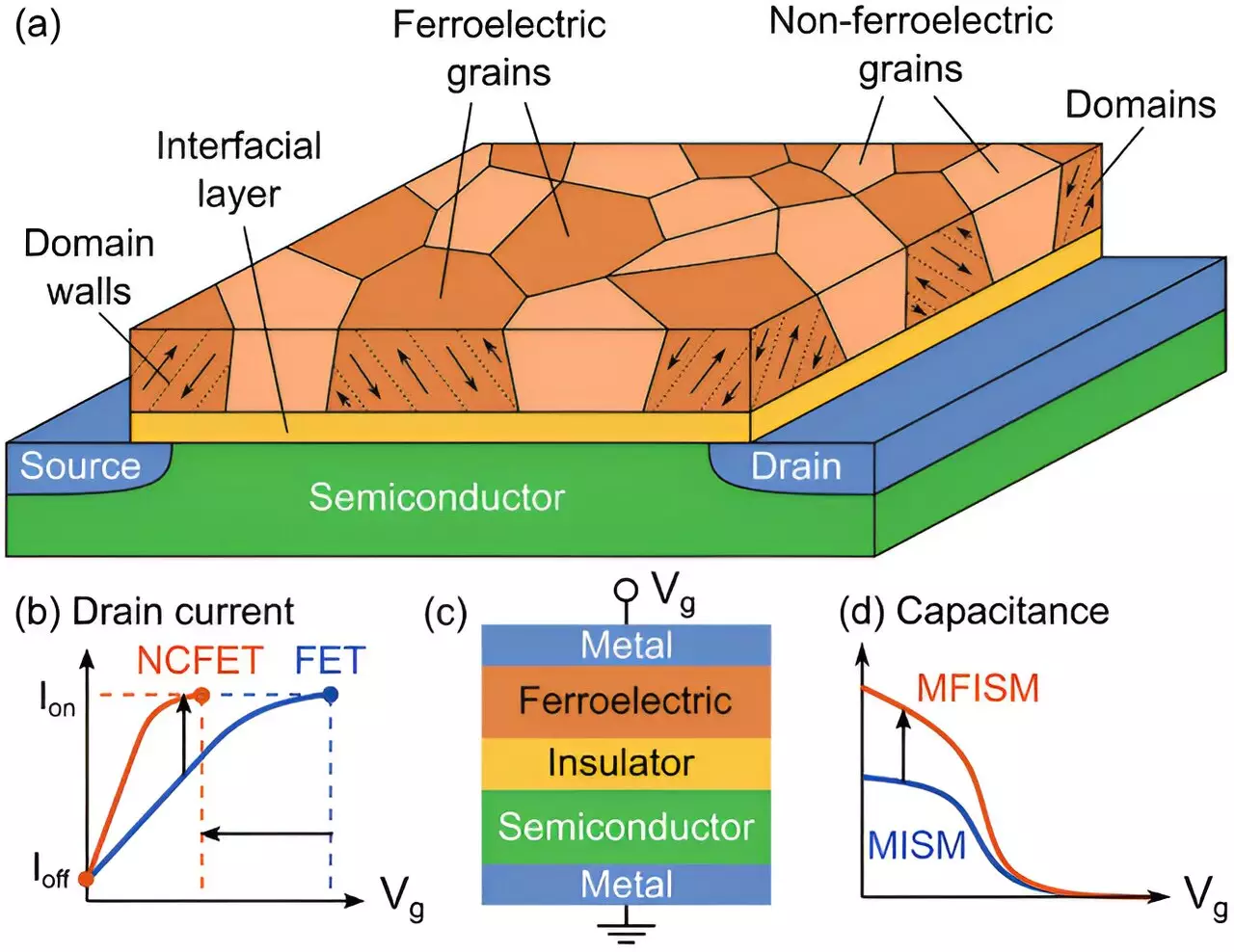The evolution of microchips has taken us into a realm where smartphones exceed the computational abilities of supercomputers from a few decades ago. As we navigate into the 21st century, the rise of artificial intelligence (AI) and the Internet of Things (IoT) introduces a pressing challenge—developing microchips capable of enhancing performance and efficiency while minimizing energy consumption. To successfully transition into this new technological era, researchers at Berkeley Lab are focusing on revolutionizing one of the most critical components of microchips: the transistor.
Recent research indicates that certain materials exhibit a unique property known as negative capacitance, which can lead to notable improvements in memory and logic devices. In typical capacitive materials, an increase in voltage is required to store a certain amount of electric charge. However, materials with negative capacitance can store a higher charge at lower voltages than their conventional counterparts. This potentially groundbreaking quality opens new avenues for designing energy-efficient microelectronics.
To fully harness this capability, a group of interdisciplinary researchers has established a detailed understanding of the origins of negative capacitance in ferroelectric materials. Their findings signal a significant step forward in the quest for next-generation microchips that far surpass the capabilities of traditional silicon-based technology.
Central to this research is FerroX, a newly developed open-source 3D simulation framework designed specifically to explore and optimize negative capacitance. This advanced tool provides an innovative platform for simulating various material parameters, enabling scientists to identify ideal configurations that improve negative capacitance effects. Zhi (Jackie) Yao, a prominent research scientist at Berkeley Lab, emphasizes that achieving optimal results in material development often involves complex trial-and-error processes. FerroX streamlines this process, allowing researchers to experiment with parameters directly from their computers.
The framework has its roots in a multiyear project aimed at co-designing ultra-low-voltage microelectronics that promise enhanced performance and reduced energy requirement profiles compared to conventional designs. This collaborative approach exemplifies Berkeley Lab’s commitment to fostering interdisciplinary science, where researchers with diverse expertise work closely to bridge the gap between theoretical research and practical applications of emerging technologies.
The concept of negative capacitance was initially introduced by Sayeef Salahuddin in 2008. His proposal outlined a novel strategy for crafting energy-efficient computational devices. Following his groundwork, researchers have identified that negative capacitance manifests in thin films comprised of varying ferroelectric phases, specifically hafnium oxide and zirconium oxide. In these films, distinct atomic arrangements enable unique electronic properties, which collectively result in the emergence of negative capacitance.
To delve deeper into this phenomenon, Yao and his co-researcher Prabhat Kumar leveraged FerroX to create phase-field simulations exploring how changes in phase composition affect electronic properties. Such granular analysis is crucial for unlocking the potential of negative capacitance and facilitating record-breaking advancements within microcapacitor technology.
The results of their simulations yield promising insights that pave the way for optimizing negative capacitance. Through manipulating the domain structure—by tweaking the size of ferroelectric grains and their orientation—researchers were able to augment the negative capacitance effect that had previously eluded them. This represents a paradigm shift, underscoring the importance of scalable modeling that adapts to the specific physics of ferroelectric materials.
Such advancements illustrate Berkeley Lab’s unique advantage, where close collaboration among scientists from varying disciplines incorporates advanced computational resources like the Perlmutter supercomputer. This platform supports high-level simulations, ensuring the research can maintain momentum toward practical applications and commercialization.
As the research community looks ahead, the implications of FerroX could resonate widely throughout academia, industry, and government labs. Current studies have focused on simulating the evolution of negative capacitance at a transistors’ gate, yet the future involves broader applications. The goal is to simulate full transistors, thereby revealing even greater insights into the optimization of microelectronics devices.
Salahuddin notes that significant strides have already been made in understanding the physics of negative capacitance. Nevertheless, the journey is far from over. By leveraging FerroX’s capabilities, the researchers aim to design new microelectronic devices with unparalleled energy efficiency and performance, thus ushering in an era of groundbreaking technological development.
The transformative potential of negative capacitance represents a crucial turning point in microchip research and development. The collaboration among scientists, aided by innovative modeling tools like FerroX, is poised to redefine the microelectronics landscape. As these efforts progress, we can expect devices that not only outperform their predecessors but also align with the growing demands for sustainable technology.


Leave a Reply